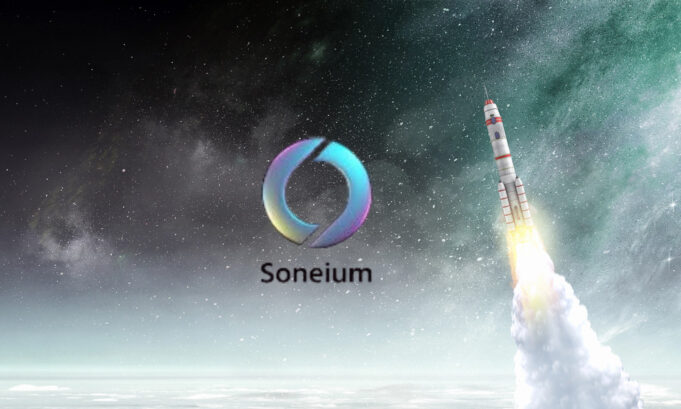Sony Group has officially entered the blockchain space with the launch of Soneium, an Ethereum Layer-2 network developed in collaboration with Startale Labs. Positioned as a key driver of Web3 adoption, Soneium aims to integrate blockchain technology into Sony’s extensive entertainment and gaming portfolio. With the public Minato testnet now live, Sony is inviting developers worldwide to build applications that could transform how digital assets and gaming experiences are created and managed.
A Strategic Leap into Blockchain
In a move that underscores Sony’s commitment to technological innovation, the company has unveiled Soneium, a pioneering blockchain network designed to capitalize on the potential of Web3 technologies within the entertainment and gaming sectors. Developed in close collaboration with Startale Labs, Soneium operates as an Ethereum Layer-2 solution. It is expected to drive new standards in digital asset management and interactive gaming experiences.
The Minato Testnet: Engaging Developers Worldwide
Launching the Minato testnet marks a critical first step in realizing Soneium’s full potential. This testnet serves as an open platform where developers from around the globe can create and test decentralized applications (dApps) tailored specifically for entertainment and gaming. Incentivizing innovation, Sony has introduced an incubator program that offers up to $100,000 in funding for standout projects.
This initiative reflects Sony’s broader vision of making Web3 technologies more accessible and relevant to mainstream users. It wants to enable new forms of content creation, ownership, and interaction.
Harnessing Strategic Partnerships
Strategic partnerships with industry leaders such as Chainlink, Optimism, and Alchemy further bolster Soneium’s development. These collaborations are designed to enhance the platform’s scalability. They will ensure it can handle the complex needs of high-volume digital transactions while maintaining user-friendliness. This focus on technical excellence is crucial for overcoming the scalability and usability challenges that have traditionally hindered blockchain adoption.
Revolutionizing Entertainment and Gaming
Sony’s venture into blockchain is not just a technological experiment. With this strategic move, Sony aims to transform the entertainment and gaming industries. By integrating blockchain into its existing ecosystem, Sony plans to leverage non-fungible tokens (NFTs) to enable new, more interactive gaming experiences. Gamers could soon be able to own, trade, and interact with in-game assets in ways that were previously impossible.
Furthermore, Soneium’s blockchain technology could introduce new revenue models for content creators and game developers. This would create a more dynamic and interactive relationship between creators and their audiences. This shift could potentially reshape the landscape of digital entertainment, making Sony a frontrunner in the Web3 revolution.
Looking Ahead: Soneium’s Future Impact
As Soneium progresses toward its mainnet launch, the performance of the Minato testnet and the applications developed on it will be critical indicators of the network’s success. If Sony successfully integrates blockchain into its vast entertainment ecosystem, Soneium could become a benchmark for how the industry adopts and implements Web3 technologies. This could open a new chapter in the convergence of technology, entertainment, and digital media.
>>> Read more: Sony Plans to Revitalize Amber Japan, WhaleFin Crypto Exchange
Sony’s launch of Soneium is a bold and strategic step into the future of digital interaction. By focusing on the integration of blockchain technology into entertainment and gaming, Sony is poised to lead the way in mainstream Web3 adoption. It could revolutionize how digital content is created, owned, and experienced. As the industry watches this development closely, Soneium could very well be the catalyst that propels blockchain into the daily lives of consumers worldwide.
Readers’ frequently asked questions
What makes Soneium different from other blockchain projects, particularly in the entertainment and gaming sectors?
Soneium stands out from other blockchain projects primarily due to its deep integration with Sony’s existing entertainment and gaming ecosystem. Unlike many blockchain initiatives that start from scratch, Soneium is leveraging Sony’s vast experience and resources in these industries. That allows it to target very specific use cases such as managing digital assets in gaming, including the use of NFTs. Additionally, Soneium is built as an Ethereum Layer-2 solution, meaning it can offer greater scalability and lower transaction costs than many first-layer blockchains. Involving industry leaders like Chainlink and Optimism in developing Soneium further enhances its credibility and potential to deliver innovative solutions that address real-world challenges in digital entertainment.
How will Soneium benefit developers and content creators?
Soneium offers several benefits to developers and content creators, primarily through the tools and resources provided by its ecosystem. The Minato testnet, for example, allows developers to build and test decentralized applications (dApps) in a supportive environment. Sony’s incubator program, which offers up to $100,000 in funding for promising projects, provides additional incentives for innovation. For content creators, Soneium could open up new revenue streams through the creation and trading of NFTs, as well as other blockchain-based digital assets. By integrating these technologies into gaming and entertainment platforms, creators can engage with their audiences in new ways. That could increase fan loyalty and opportunities to monetize content more effectively.
What challenges could Soneium face in achieving mainstream adoption?
While Soneium has a strong foundation, there are still several challenges it might face in achieving mainstream adoption. One significant hurdle is the general public’s limited understanding and acceptance of blockchain technology. Despite the potential benefits, many users may be hesitant to engage with Web3 applications due to perceived complexity or concerns about security and privacy. Additionally, Soneium must demonstrate that it can provide tangible improvements over existing systems, such as smoother user experiences or more cost-effective solutions. Finally, as the blockchain space becomes increasingly competitive, Soneium must keep innovating and build a robust ecosystem of developers, users, and partners to maintain its relevance and drive widespread adoption.
What Is In It For You? Action Items You Might Want to Consider
Monitor Soneium’s Testnet Developments for Early Entry Opportunities
Keep a close eye on the progress and feedback surrounding Soneium’s Minato testnet. As Sony continues to refine and expand this blockchain, early involvement in its ecosystem could present unique investment opportunities. Participating in or supporting early projects built on Soneium might provide you with access to potentially lucrative tokens or NFTs before they hit the broader market.
Explore Potential Investments in Related Blockchain Partners
Consider researching and potentially investing in companies that are partnering with Sony on Soneium, such as Chainlink and Optimism. These firms are integral to Soneium’s infrastructure. Their involvement could positively impact their own market performance as Soneium gains traction. Diversifying your portfolio to include these established blockchain projects could be a strategic way to capitalize on Soneium’s growth indirectly.
Evaluate the Long-Term Potential of Blockchain in Entertainment and Gaming
Reflect on the broader implications of Sony’s move into blockchain and how it could reshape the entertainment and gaming industries. If you believe in the long-term viability of blockchain technology in these sectors, start looking into investment opportunities in related projects, companies, or even in Soneium itself if it becomes publicly accessible. Staying ahead of industry trends will position you well for future market shifts as blockchain continues to integrate into mainstream entertainment.











[…] to expand the utility and market share of USDC. The collaboration aims to integrate Bridged USDC on Sony’s new Soneium blockchain, an Ethereum Layer-2 solution launched in August 2024. By positioning USDC as a key transaction […]
[…] >>> Read more: Sony’s Soneium Blockchain: Revolutionizing Gaming […]